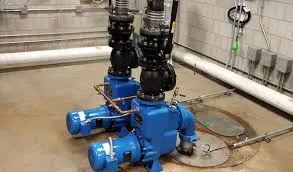Swedish
- Afrikaans
- Albanian
- Amharic
- Arabic
- Armenian
- Azerbaijani
- Basque
- Belarusian
- Bengali
- Bosnian
- Bulgarian
- Catalan
- Cebuano
- Corsican
- Croatian
- Czech
- Danish
- Dutch
- English
- Esperanto
- Estonian
- Finnish
- French
- Frisian
- Galician
- Georgian
- German
- Greek
- Gujarati
- Haitian Creole
- hausa
- hawaiian
- Hebrew
- Hindi
- Miao
- Hungarian
- Icelandic
- igbo
- Indonesian
- irish
- Italian
- Japanese
- Javanese
- Kannada
- kazakh
- Khmer
- Rwandese
- Korean
- Kurdish
- Kyrgyz
- Lao
- Latin
- Latvian
- Lithuanian
- Luxembourgish
- Macedonian
- Malgashi
- Malay
- Malayalam
- Maltese
- Maori
- Marathi
- Mongolian
- Myanmar
- Nepali
- Norwegian
- Norwegian
- Occitan
- Pashto
- Persian
- Polish
- Portuguese
- Punjabi
- Romanian
- Russian
- Samoan
- Scottish Gaelic
- Serbian
- Sesotho
- Shona
- Sindhi
- Sinhala
- Slovak
- Slovenian
- Somali
- Spanish
- Sundanese
- Swahili
- Swedish
- Tagalog
- Tajik
- Tamil
- Tatar
- Telugu
- Thai
- Turkish
- Turkmen
- Ukrainian
- Urdu
- Uighur
- Uzbek
- Vietnamese
- Welsh
- Bantu
- Yiddish
- Yoruba
- Zulu
Telephone: +86 13120555503
Email: frank@cypump.com
aug . 21, 2024 08:09 Back to list
Durable Components for Metal Slurry Pump Efficiency and Performance Optimization
Understanding Metal Slurry Pump Parts An Overview
Metal slurry pumps are essential components in various industrial applications, particularly in mining, mineral processing, and construction. These pumps are specifically designed to handle thick, abrasive mixtures of liquids and solids, commonly referred to as slurries. Understanding the key parts of metal slurry pumps is vital for ensuring efficient operation and longevity.
Key Components
1. Pump Housing The pump housing is the outer shell that encases the internal components of the pump. Generally made of high-quality metals such as cast iron or stainless steel, the housing must be robust enough to withstand the abrasive nature of the slurry. Its design plays a crucial role in maintaining pressure and directing the flow of the slurry throughout the system.
2. Impeller The impeller is the heart of the pump, responsible for imparting kinetic energy to the slurry. Typically made from wear-resistant alloys, the impeller's design can vary significantly depending on the specific application and the characteristics of the slurry being pumped. The shape, size, and number of blades on the impeller influence the efficiency and capacity of the pump.
3. Volute The volute is a spiral-shaped casing that surrounds the impeller. It converts the kinetic energy of the liquid exiting the impeller into pressure energy, which helps push the slurry through the system. The design of the volute is critical as it impacts the flow rate and efficiency of the pump.
4. Suction and Discharge Ports The suction port is where the slurry enters the pump, while the discharge port is where it exits. Both ports are typically equipped with flanges to facilitate easy connections to piping systems. Ensuring that these ports are properly sealed and free of obstructions is essential for optimal pump performance.
metal slurry pump parts

5. Bearings Bearings support the rotating shaft of the impeller and reduce friction during operation. They play a significant role in the overall efficiency and lifespan of the pump. Bearings in slurry pumps are often constructed from tough materials capable of withstanding harsh conditions due to the abrasive nature of the slurries being handled.
6. Shaft The shaft connects the impeller to the motor and transmits the rotational energy necessary for pump operation. A sturdy shaft is essential for maintaining the pump's mechanical integrity, especially in applications involving high rotational speeds and heavy loads.
7. Seals Seals are vital for preventing leaks of the slurry and protecting the internal components from external contaminants. They are typically made from wear-resistant materials that can endure the operational conditions. Proper seal maintenance is crucial to ensure that the pump operates efficiently and to extend its lifespan.
8. Wear Liners Given the abrasive nature of slurries, wear liners are often installed within the pump housing. These liners are made from tougher materials and are designed to withstand erosion over time. Regular inspection and replacement of wear liners are necessary to maintain pump efficiency.
Conclusion
In summary, metal slurry pumps are complex machines comprised of various components that work together seamlessly to transport abrasive mixtures effectively. Understanding the individual parts—including the pump housing, impeller, volute, suction and discharge ports, bearings, shaft, seals, and wear liners—can significantly impact the operation and maintenance of the pump. Utilizing high-quality materials and designs optimized for specific applications ensures that metal slurry pumps can withstand the rigors of industrial environments, ultimately leading to enhanced performance and reduced downtime. As industries continue to evolve, the technology and designs of slurry pumps will likely advance, making it essential for operators to stay informed and engaged with best practices in pump maintenance and use.
-
Custom Drilling Mud and Slurry Pump Supplier - High Efficiency, Tailored Solutions
NewsJun.10,2025
-
Supply Vertical Submersible Sewage Pump High-Efficiency WQ/QW Pumps Supplier
NewsJun.10,2025
-
Premium Sewage Ejection System & Pumps Efficient Waste Removal
NewsJun.09,2025
-
Premium Wholesale Slurry Pump Impellers Durable & Efficient Slurry Handling
NewsJun.09,2025
-
Top Sewage Pump Companies Durable Industrial Solutions for Efficiency
NewsJun.09,2025
-
Heavy Duty Slurry Pumps - OEM High Performance & Bulk Wholesale
NewsJun.09,2025










